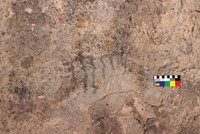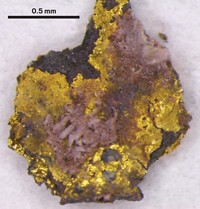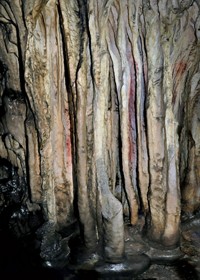Advertisement
Grab your lab coat. Let's get started
Welcome!
Welcome!
Create an account below to get 6 C&EN articles per month, receive newsletters and more - all free.
It seems this is your first time logging in online. Please enter the following information to continue.
As an ACS member you automatically get access to this site. All we need is few more details to create your reading experience.
Not you? Sign in with a different account.
Not you? Sign in with a different account.
ERROR 1
ERROR 1
ERROR 2
ERROR 2
ERROR 2
ERROR 2
ERROR 2
Password and Confirm password must match.
If you have an ACS member number, please enter it here so we can link this account to your membership. (optional)
ERROR 2
ACS values your privacy. By submitting your information, you are gaining access to C&EN and subscribing to our weekly newsletter. We use the information you provide to make your reading experience better, and we will never sell your data to third party members.
Archaeology’s Hidden Secrets
Ancient Ivory: Metal traces on Phoenician artifacts show long-gone paint and gold
by Sarah Everts
May 17, 2013
| A version of this story appeared in
Volume 91, Issue 20

Ancient ivory carvings made by Phoenician artists some 3,000 years ago have long hidden a secret, even while being openly displayed in museums around the world: The sculptures were originally painted with colorful pigments, and some were decorated with gold.
Researchers based in France and Germany report chemical analyses showing that 8th-century B.C. Phoenician ivory artifacts bear metal traces that are invisible to the naked eye (Anal. Chem. 2013, DOI: 10.1021/ac4006167).
These metals are found in pigments commonly used in antiquity, such as the copper-based pigment Egyptian blue or the iron-based pigment hematite. The metals are not normally in ivory nor in the soil where the artifacts were long buried, explains Ina Reiche, a chemist at the Laboratory of Molecular & Structural Archaeology, in Paris. Reiche led the research, which was performed on ivory originally unearthed in Syria and now held at Baden State Museum, in Karlsruhe, Germany.
Phoenicians were seafaring Semitic traders who pioneered the use of an alphabet later adopted in ancient Greece, and they controlled the valuable royal-purple pigment trade throughout the Mediterranean during the period 1500–300 B.C.
Scholars had suspected that Phoenician ivory sculptures might initially have been painted, but to date most studies had examined just a few spots on ivory surfaces, Reiche says. Her team used a synchrotron to do X-ray fluorescence spectroscopy to analyze the entire surface of the artifacts with micrometer resolution, revealing the spatial distribution of the lost pigmentation.
“Knowledge of an object’s original appearance can help us understand why it was so visually powerful to ancient viewers,” says Benjamin W. Porter, an archaeologist at the University of California, Berkeley. And there are plenty of important objects to examine, he adds. “This technique is transferable to other kinds of ancient art whose pigments have been weathered, from the palace wall reliefs of the Assyrian empire to Egyptian tomb paintings to everyday ceramic vessels whose decorations have been worn.”





Join the conversation
Contact the reporter
Submit a Letter to the Editor for publication
Engage with us on Twitter